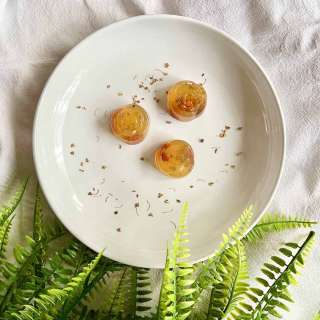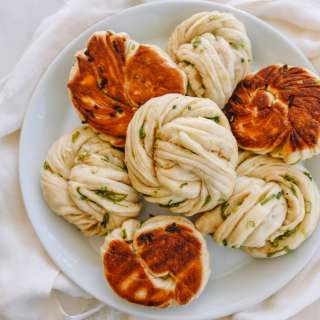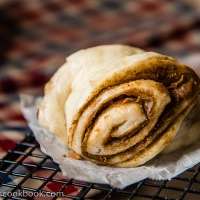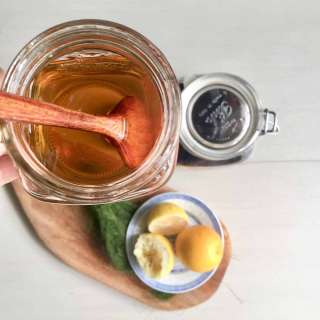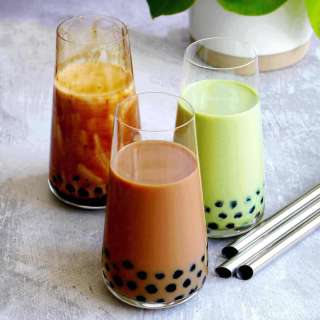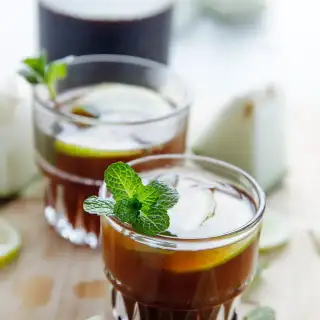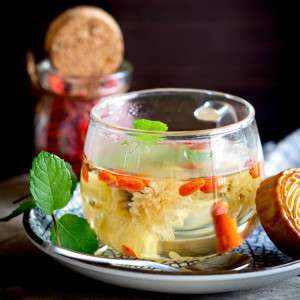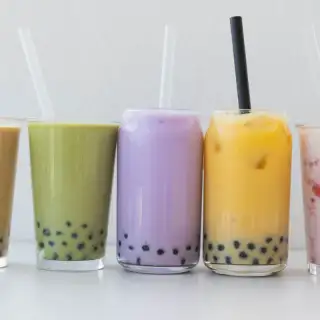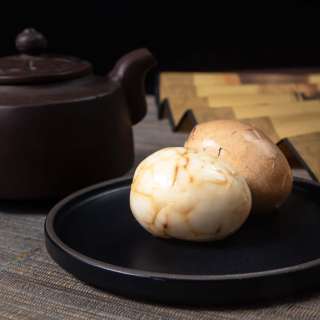
Golden Osmanthus Tea (Gui Hua Cha)
User Reviews
5.0
120 reviews
Excellent

Golden Osmanthus Tea (Gui Hua Cha)
Report
One of the most popular non-caffeinated Chinese teas, Pure Golden Osmanthus Tea (or 桂花茶 Gui Hua Cha) was part of the Chinese imperial palace's diet dating back to the Tang dynasty! If you want to drink what the royals drank, here are 4 easy ways to make this beautifying, classic and popular Chinese tea
Share:
Ingredients
Pure Osmanthus Tea (Plain)
- 1 teaspoon dried osmanthus flowers
- 1 Cup water at 185F/ 85C Chinese people don't believe in making tea with boiling water. If you're not fanatical about tea making, you don't have to use a thermometer- just leave the boiling water to cool slightly before using it to make tea!
Pure Osmanthus Tea (Sweetened)
- 1 teaspoon dried osmanthus flowers
- 1 Cup water at 185F/ 85C As above
- Either osmanthus sugar, honey or rock sugar, to taste
Osmanthus Oolong Tea
- 1 teaspoon dried osmanthus flowers
- 2 teaspoon dried oolong tea leaves
- 1 Cup water at 185F/ 85C As above
Osmanthus Green Tea
- 1 teaspoon dried osmanthus flowers
- 2.5 teaspoon dried green tea leaves
- 1 Cup water at 185F/ 85C As above
Instructions
Pure Osmanthus Tea (Plain)
- Bring water to the boil and let it cool. If you like to be exact, use a thermometer to make sure the water is 85C/ 185F before making tea
- Place the dried flowers in a tea strainer and run through with hot water (i.e. you're washing the tea "leaves" to get rid of any dirt any dust on it)
- Add 1C of 85/ 185F water to the dried flowers and leave to steep, to taste. (I usually leave it about 2-3 minutes) The longer you steep the flowers, the stronger the flavour and the more golden the colour.
- If you're a visual person, add a few osmanthus blossoms to the cup!
Pure Osmanthus tea (Sweetened)
- Repeat the above steps, but add some sweetener to taste, such as rock sugar or honey. You can also use natural sweeteners such as dried longans, wolfberries and red dates. Note that they're all warming, according to TCM, so taking too much is not advisable as it would put the body out of balance. (Too much heaty foods can lead to sore throats and acne.)
Osmanthus Oolong Tea
- Repeat the steps for Osmanthus Tea (Pure) but add the oolong tea leaves to the osmanthus flowers in the strainer.
Osmanthus Green Tea
- Repeat the steps for Osmanthus Tea (Pure) but add the green tea leaves to the osmanthus flowers in the strainer.
Notes
- Note that overly concentrated osmanthus- either by using too much dried flowers to water, or by steeping for too long- can lead to a bitter flavour. Don't toss it out if you've made this rookie mistake- simply add a bit of sweetener!
- Storage
- These golden flowers get moist easily so make sure to keep them airtight containers. (Toss in 1 of the dehumidifying food-grade packs, if you have them.)
- It's generally recommended to use any osmanthus tea you have within 1 year but I confess I don't always do that. (Best before dates are guides not hard and fast rules, after all.)
- Do toss if you notice it's moist or if you see any mold!
- Note: the nutritional information is an estimate automatically calculated using the WPRM recipe maker and I am not responsible for its veracity. The values for dried osmanthus are taken from Myfitnesspal.com
Nutrition Information
Show Details
Calories
58kcal
(3%)
Carbohydrates
11g
(4%)
Protein
4g
(8%)
Sodium
48mg
(2%)
Potassium
8mg
(0%)
Calcium
28mg
(3%)
Nutrition Facts
Serving: 1person
Amount Per Serving
Calories 58 kcal
% Daily Value*
| Calories | 58kcal | 3% |
| Carbohydrates | 11g | 4% |
| Protein | 4g | 8% |
| Sodium | 48mg | 2% |
| Potassium | 8mg | 0% |
| Calcium | 28mg | 3% |
* Percent Daily Values are based on a 2,000 calorie diet.
Genuine Reviews
User Reviews
Overall Rating
5.0
120 reviews
Excellent
Other Recipes
You'll Also Love
Korean plum tea recipe (green maesil cha) (ume) (suanmei)
Chinese, Japanese, Korean
5.0
(117 reviews)
